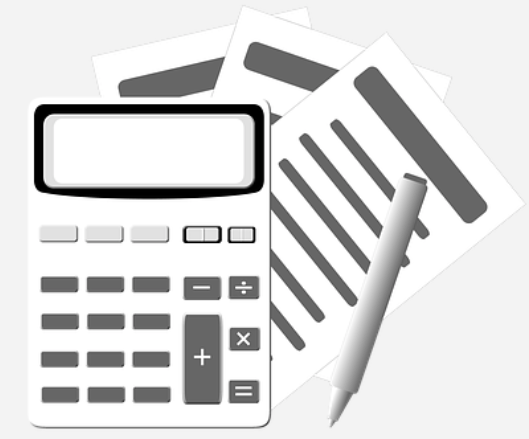
Law Firms are Inefficiency Factories, Automation is the Cure
By Richard Tromans, Founder, Tromans Consulting + Artificial Lawyer
There may be a more indirect way of saying this, but perhaps it is better to simply say it like it is: law firms are inefficiency factories and automation is the cure.
There, I said it. And…wait for it…..the sky has not fallen, the world has not ended. But, if we’re going to leverage this truth, then we need to dig a bit deeper.
The Price of Legal Work: E + I = P
When it comes to buying services from other people then the transactional equation can be boiled down to the following:
Expertise + Inefficiency of Work = Price Paid
Or,
E + I = P
By expertise it is meant the, albeit subjective, view of the buyer of what level of knowledge, experience and capability the seller of the service has.
For example, if I want my home painted I seek out an experienced painter and decorator, as they will – I expect – do a better job than anyone else. I’ll pay more for one with a good reputation, who has operated for some time, who can show they have serviced my neighbours, who can perhaps namedrop a few big clients they have had over the years, and who can show some nice pictures of examples of work they’ve done for others. All in all, their expertise, that’s what I’m paying for.
(We could also add to this aspects such as brand value, i.e. in the absence of any other objective information humans tend to respond to well-known brands that appear to reflect their values – even if such decisions can turn out to be erroneous. We also respond well to good service and attentiveness, because we all like to be treated as if we matter, especially when we are forking out $1,000s.)
But, if we return to the biggest elements of the price equation, then the other key factor is: the inefficiency of the seller’s work processes.
The buyer may not be consciously buying inefficiency from the seller, but that is exactly what is happening. And the buyer will be paying for it whether they want to or not.
Let’s unpack this using the example of painting the house. I.e., the level of inefficiency is the time it takes to manually apply paint to the walls of my house. It can’t be zero time, and it can’t go on indefinitely either. If it could be applied faster and still encapsulate the expertise and knowhow of the painter I hired that would be great. But I can only sit back and wait for it to be done at the speed the seller wishes to provide it.
To put it prosaically: the buyer eats the unpleasant inefficiency to get to the benefits of the expertise cake.
OK, I’m sure you can see where I am going with this: a law firm is no different to a group of painters and decorators. They both sell expertise and inefficiency.
As a buyer I accept – perhaps unwillingly or unconsciously – that both come together as a package. They are two faces of the same coin, with one face beautiful and valued, the other face not so nice and not valued very much. But, I can’t pull that coin apart. The good and the bad come together. And, as noted, in most cases the buyer – because we are so used to this in the service world – doesn’t really focus on the inefficiency, i.e. doesn’t even think that they might be able to pull those two aspects apart.
Very rare, if ever, is the scenario where a GC rings up a partner of a law firm and says: ‘We want to merge with company X, given what you know of us and the other company, do you foresee a significant legal reason not to proceed? Please give a yes or no answer, as whatever the response is will determine what we do next. For that yes or no answer we will pay you $1 million, because that is how much your expertise is worth to this company. Oh…and we want the answer in the next 10 seconds.’

The reality is the firm will explain that it needs to do a proper due diligence exercise, which until recently would mean a major ‘manual’ process task involving plenty of leverage (whether with their own associates, paralegals on tap, or an LPO or other type of ‘body shop’ + cost arbitrage model). And, being realistic, the GC will also demand such an exercise for fear of not doing a good job for their employer. In effect both parties commit to this inefficiency even if it is done tacitly and without discussion.
Despite the consent, the inefficiency cost will be significant and will be added onto the expertise cost provided by the more experienced lawyers working on the matter, in areas such as negotiation, highlighting emerging risks that the companies may not have seen before and other high value insights.
Of course, this isn’t just for M&A due diligence. Name any legal process, from appealing a parking ticket to trying to settle a divorce, to drawing up a derivatives contract, inefficiency gets added to the bill.
It’s as if every time you went to a restaurant for a nice meal and paid $100, you found that the ‘service charge’ is half the total bill, i.e. $50 is for the culinary skills and ingredients, $50 for getting it onto your plate.
Can This Equation be Changed?
Can we totally remove inefficiency from the service industry, and from law in particular? The answer is: no, not completely. We can never entirely remove inefficiency, there will always be ‘friction’ in the ‘production line’, even if it remains just a few percentage points of the final bill to the client.
The question then is: can we significantly reduce the level of inefficiency in the legal production line?
Now we are on happier ground, because we can definitely reduce that using automation at different points along each legal product’s manufacturing pathway. (And even an M&A agreement at the end of the day is ‘a manufactured product’.)
There are several types of automation in the legal world – many have been detailed over the last two years on this site. The use of what are termed ‘legal AI’ tools, such as using NLP software and machine learning to teach a system to conduct a due diligence review, is just one type of use. Though, they’re one of my favourites simply because they are so powerful and so effective.
But, it’s worth stressing that the key word here is NOT ‘AI’, it’s automation. AI is just a means to an end, and that end is the reduction of inefficiency.
While some people like to wonder about human-like machines, my area of interest is more business-focused, I’d just like to see one of the global economy’s most important sectors, i.e. the legal sector, perform a lot, lot better than it is today and in doing so bring great benefits to our society as a whole.
(Note: NLP/ML systems can do a lot more than provide efficiency, they can find new insights into legal data that most businesses would simply never uncover using manual methods alone. Although, one could argue that these new insights are themselves only possible because AI reduces the cost of finding them…..so, maybe in fact all roads do lead back to efficiency.)
Moving on, the real issue is this: if automation can help, even fractionally (and I’d argue it can help a lot more than that), why are law firms so slow to adopt this technology?
The answer is of course: many lawyers observe that selling inefficiency is a pillar of their livelihoods.
Some may not see it in those terms, (they may simply see it as ‘a nice big piece of work’, or ‘that’s a great project that will keep my team busy!’); nor in the past may they have considered there was an alternative. But there it is, that’s the economic reality.
If lawyers only sold expertise – I mean really, really only sold things like the ability to fine tune the negotiation of a contract, or stand up in court to change the way a jury sees a legal matter – then how much money would law firms be making now if they still charged as they do today (i.e. selling time + value, rather than just value?)

It’s hard to quantify, but even being conservative, we’d have to guess that law firm incomes would be down about half what they are today if they couldn’t sell their inefficiency to anyone.
Moreover, their equity partner profits would be down by about 80% or more, given the huge cost base they carry, at least if they couldn’t leverage the body shop they’ve built as they do now to do something else of more value, and if they kept this legal army on their balance sheet.
Of course, in a world of significant automation any law firm would be reckless to keep going with the old pricing and business model. And we are only just nudging up against that prospective reality. We are far from crossing the threshold. But I believe we will get there, in ten years, in fifteen, in twenty? Hard to tell, but we will get there.
Is this Deliberate?
I’ve spent a long time considering whether the inefficiency of law is a choice, or simply ‘the way of the world’ and no real choice at all. After all, it’s a popular cultural theory these days that ‘everything in life is a choice’, (which seems an incredibly narrow view of how the world actually works).
There is little objective evidence on this point. The main legal magazines have never, as far as I know, done a survey asking the UK 100 and AmLaw 100: ‘Do you intentionally maximise inefficiency – up to the point of objection by your clients – in order to exploit your junior leverage to create additional profits, even when there may be better or cheaper ways of doing it, such as using today’s wide range of legal automation tools and services?’
It would be a great question to ask and I’d love to see the results, except for the fact I’d guess every single firm would say: no. As who would admit to extracting value from clients (i.e. in monetary terms) by selling unnecessary inefficiency (i.e. because they already know they could automate away some of the inefficiency)?
Over the almost 20 years I’ve spent working in the legal market, I have witnessed a lot, from law firms, clients, and the people that advise both of them. And, without mentioning anyone, let’s just say: some firms are well aware of what inefficiency can do for one’s bottom line, while others really don’t think about the value of legal work in those terms. (I clearly prefer the latter group of firms, so do a lot of GCs).
At a later date I’ll dig into these differences in more detail, but for now, let’s go to the conclusion.
Conclusion
To recap, the equation:
Expertise + Inefficiency of Work = Price Paid
Or,
E + I = P
…seems to be the best way of explaining what has been going on these past decades in the legal world, especially as the volume of legal data has expanded exponentially and the level of leverage used among legal providers has grown.
I can’t believe that any corporation, SME or individual wishes to pay for any more inefficiency than is necessary to get the end result they want. In the past there were few ways to reduce that inefficiency. That in turn has led to some law firms becoming ‘inefficiency addicts’, or as the title of this piece puts it, ‘inefficiency factories‘, i.e. they manufacture inefficiency for money, though perhaps they are unaware of this situation.
But, now there is a better way of doing things. That better way is called: automation.
How much automation can be used in legal processes we simply don’t know yet, as we are just at the start of this journey.
At present the well-known examples of document automation; automated review and compliance/risk checking; automated expert systems; and automated workflow tools, are just beginning to have an impact.
But, that will change, especially as clients understand – and perhaps this is one of the most important parts of this change – that there is another way of doing things.
And on that note, I’ll stop. But, I’ll leave you with a rumour that has been heard on the legal tech grapevine, that some GCs are asking law firms for backdated repayment of fees that had gone into overly expensive manual review after discovering how much better automated systems could be.
Maybe the days of exploiting inefficiency are truly numbered? We’ll see.
2 Trackbacks / Pingbacks
Comments are closed.